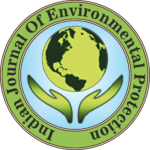IJEP 43(3): 257-262 : Vol. 43 Issue. 3 (March 2023)
Pavithra R.1,2* and Sangeetha Sriraam3
1. CHRIST (Deemed to be University), School of Law, Bengaluru, Karnataka – 560 029, India
2. National Law School of India University, Bengaluru, Karnataka – 560 072, India
3. Central University of Tamil Nadu, Department of Law, Chennai, Tamil Nadu – 610 005, India
Abstract
Electricity and artificial lights were synonymous with economic growth and development. Unfortunately, over usage of artificial lights has proven adverse effects. Research shows that excessive light impacts human health and endangers ecological balance, disturbs wildlife, causes decline in insect, moth, reptile pollution and depletes energy resources. Countries around the world have gradually started recognising light pollution as an emerging challenge and have brought in regulations to curb it. However, India is yet to recognise the threat of light pollution. Against this backdrop, the authors have established the need to recognise light pollution as a matter requiring dedicated and concerted focus. This was achieved through the analysis of recent and credible journal articles category with a cite score of over ten. Reliance was also placed on the light pollution map to understand the intensity of the problem, especially in India. The authors next conducted a study of legal regimes governing light pollution and artificial light, in different jurisdictions around the globe. The paper draws upon the best practices from these jurisdictions and suggests that India adopt techno-legal legislation, at the earliest, to combat light pollution.
Keywords
Light pollution, India, Laws, Best practices, Techno-legal legislation
References
- Falchi, F., et al. 2016. The new world atlas of artificial night sky brightness. Sci. Adv., 2 (6). doi: 10.1126/ sciadv.1600377.
- Horton, K G., et al. 2019. Bright lights in the big cities: Migratory birds’ exposure to artificial light. Fron. Ecol. Env., 17(4). doi: 10.1002/fee.20 29.
- Davies, T.W., et al. 2020. Biologically important artificial light at night on the seafloor. Sci. Rep., doi: 10.1038/s41598-020-69461-6.
- Vowles, A.S. and P.S. Kemp. 2021. Artificial light at night (ALAN) affects the downstream movement behaviour of the critically endangered European Eel, Anguilla anguilla. Env. Poll. doi: 10.1016/j.envpol. 2021.116585.
- Anezka Gocova. 2013. The night issue. Alternatives J., 39:5.
- Donatello, S., et al. 2019. Revision of the EU green public procurement criteria for road lighting and traffic signals: Technical report and criteria proposal. Joint Research Centre, European Commission.
- Kumar, P., et al. 2018. Analyzing trend in artificial light pollution pattern in India using NTL sensor’s data. Urb. Cli., 27. DOI: 10.1016/j.uclim.2018.12. 005.
- Bedi, T.K., et al. 2021. Light pollution in India: Appraisal of artificial night sky brightness of cities. Env. Dev. Sustain. Develop. Sustain. doi: 10. 1007/s10668-021-01384-2.
- The StarLight Conference. 2007. International Conference on Defence of the quality of the night sky and the right to observe the stars.
- SP 72. 2010. National lighting code 2010 (ETD 24: Illumination engineering and luminaries). Bureau of Indian Standards.
- Falcón, J., et al. 2020. Exposure to artificial light at night and the consequences for flora, fauna and ecosystems. Fron. Neusci., 14:1183. doi: 10.33 89/fnins.2020.602796.
- Hölker F., et al. 2010. The dark side of light: A transdisciplinary research agenda for light pollution policy. Eco. Soc., 15(4):13.
- Kyba, C.C., et al. 2017. Artificially lit surface of earth at night increasing in radiance and extent. Sci. Adv., 3 (11). DOI: 10.1126/sciadv.1701528.
- National Science Foundation. 2020. Noise and light pollution affecting breeding habits in birds. Available at: https://www.nsf.gov/discoveries/disc_summ.jsp?cntn_id=301714&org=NSF.
- Ghosh, S. 2019. Light pollution on the rise in India: Study. Mongabay. Available at: https://india.mongabay.com/ 2019/01/light-pollution-on-the-rise-in-india-study/.
- Zieliñska-Dabkowska, K.M., et al. 2020. Assessment of citizens’ actions against light pollution with guidelines for future initiatives. Sustain., 12 (2): 4997. doi: 10.3390/su12124997.
